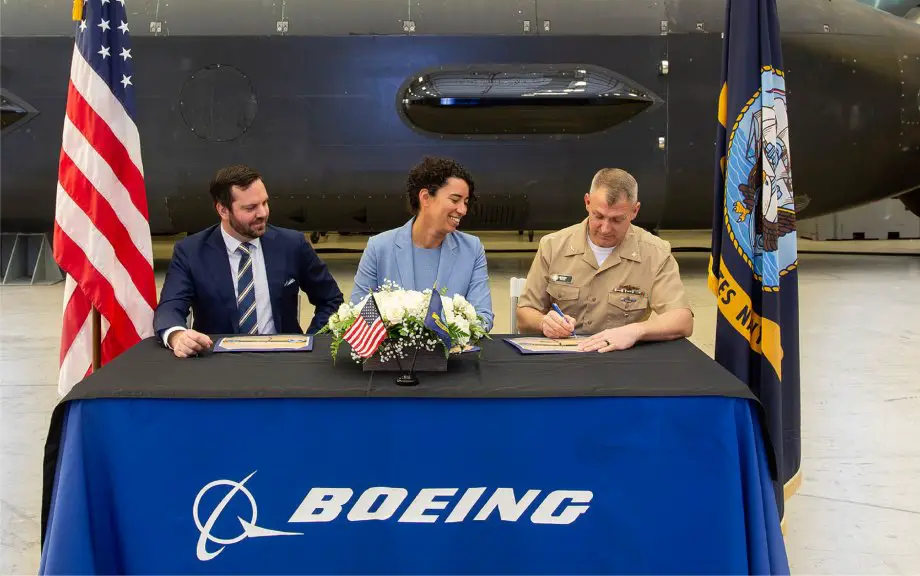According to a PR published by Boeing on December 20, 2023, the company has recently handed over the first of its Orca Extra Large Uncrewed Undersea Vehicles (XLUUV) to the U.S. Navy.
Follow Navy Recognition on Google News at this link
 Handing ceremony of the first Orca XLUUV for the US Navy. (Picture source: Boeing)
Handing ceremony of the first Orca XLUUV for the US Navy. (Picture source: Boeing)
The project, led by Ann Stevens, reflects a significant development effort in autonomous underwater technology. The Orca XLUUV distinguishes itself by its ability to operate independently of a host vehicle and carry substantial payloads.
Extensive at-sea testing was conducted to demonstrate the vehicle's capabilities in a variety of maritime conditions. These tests were crucial in validating the operational effectiveness of the Orca in different scenarios.
This delivery is part of a progression in undersea vehicle technology at Boeing, which has a history of developing such vehicles. The Echo Voyager, an earlier prototype, served as a foundational step in the development of the Orca XLUUV. The experience gained from the Echo Voyager's sea operations informed the design and functionality of the Orca, culminating in its integration into the U.S. Navy's fleet.
Orca XLUUV
The Orca's design has a standard length of 51 feet. This length can be increased up to 85 feet with an additional payload module, allowing for mission-specific adaptations. The payload module can accommodate up to 8 metric tonnes, providing flexibility for various operational needs.
Powered by a hybrid diesel/lithium-ion battery system, the Orca operates on battery power while submerged and uses diesel generators for recharging when surfaced. This system ensures a balance between operational range and endurance, with the vehicle capable of reaching speeds up to 8 knots and typically cruising at around 3 knots. This speed and efficiency grant the Orca a range of up to 6,500 nautical miles, suitable for prolonged missions.
XLUUV
The development of Extra Large Unmanned Undersea Vehicles (XLUUVs) marks a significant shift in undersea capabilities, introducing autonomous systems capable of performing a range of missions traditionally undertaken by crewed submarines.
These vehicles are designed for extended, deep-water operations, including surveillance, mine countermeasures, and anti-submarine warfare. They operate independently and can stay at sea for extended periods, offering new possibilities for naval strategy and operations.
Despite their potential, XLUUVs present several challenges. Integrating these autonomous systems into existing naval frameworks is a complex process. It requires adaptations in command and control structures, as well as updates to operational planning and logistical support. Ensuring that these unmanned vehicles can communicate effectively and be controlled reliably in the undersea environment is crucial, given the lack of on-site human intervention.



